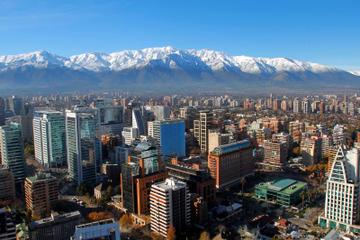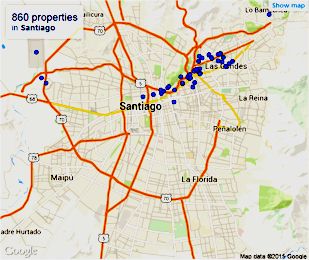« CHILE • Discover Chile • Santiago
Discover magical Santiago
Compared to other cities in Latin America, Santiago feels distinctly European. Its stately, dignified boulevards and neoclassical architecture, swanky high-rise suburbs, efficient metro system and, above all, general state of orderliness reflect a culture that is hard-working, prosperous and business-minded.
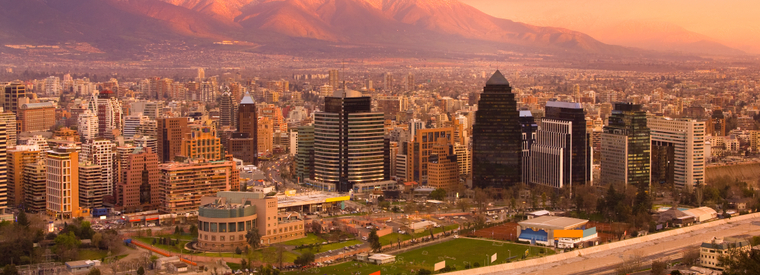
A | B | C | D | E | F | G | H | I | J | K | L | M | N | O | P | Q | R | S | T | U | V | W | X | Y | Z
» Palacio de Bellas Artes
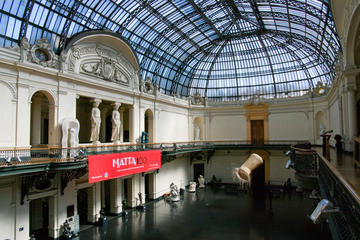
Constructed in 1910, at the height of Latin America's frilly neoclassical-meets-art nouveau architectural wave, the graceful Palacio de Bellas Artes still strikes an imposing figure amidst modern Santiago's cold skyscrapers. Its ornate stone facade, which would do any cathedral proud, and permanent artistic merit make it the perfect home for the National Museum of Fine Arts. The permanent collection, displayed in the Palacio's soaring chambers, begins with the Spanish Colonial era and traces Chile's cultural development through the styles of its artistic masters …
» Parque Arauco
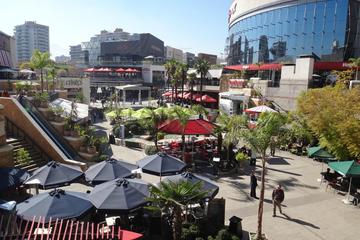
Santiago's Parque Arauco mall is huge. Set on two levels, there are more than 20 restaurants, and you'll see global brands like Starbucks, Nine West, and the Gap dotted along its two floors. There's also a luxury stores district where you can shop at the likes of Louis Vuitton, Dolce & Gabbana, Burberry, Mont Blanc, and Emporio Armani, and there's an entertainment zone that includes a cinema with 3D, 4D, and premium screens, an ice-rink, a bowling alley, and Mori Cultural Center and Theater …
» Parque de Las Esculturas
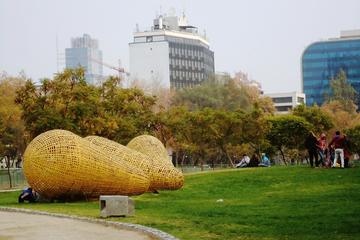
This peaceful park along the Mapocho River features several different types of sculpture, from representational to geometric and abstract, in natural materials such as stones, and also some of more distinctive pieces, such as a yellow cage-like structure, and a large metal cube made of parallel bars. The sculpture park is easily found by exiting the metro at Pedro de Valdivia and heading north, and you will recognize immediately that you are headed in the right direction as you cross over the Mapocho river on a bridge that is also dotted with sculptures …
» Parque Forestal
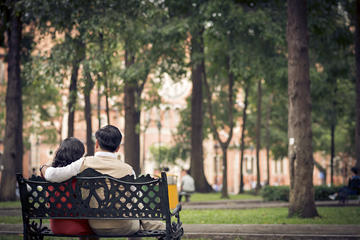
Those looking to play and picnic in downtown Santiago always head to Parque Forestal. The park runs from an area near the Central Market up to Plaza Italia as a strip of greenery with walking paths, leafy trees, old-fashioned lamp posts, playgrounds and two of the city's most important museums. These are the Bellas Artes and the Museum of Contemporary Art, which stand back to back in the park near the metro Bellas Artes. The latter's chunky Botero horse statue out front makes it easy to spot, while Bellas Artes faces the street José Miguel de La Barra …
» Plaza de Armas
At the heart of Santiago de Chile's historic district is the city's social hub, the palm-shaded Plaza de Armas. Surrounded by the neoclassical facades of Santiago's most important buildings, including the Metropolitan Cathedral; the Municipalidad, or federal building; and perhaps most striking, the magnificent Correo Central, or old post office. Two pedestrian malls, lined with handicrafts vendors, independent musicians, and plenty of cafes and shops, stretch out from the festive city center. Most of Santiago's museums and important sites are within a few blocks …
» Plaza de la Constitucion
.jpg)
At the heart of Chile's political landscape, the Plaza de la Constitucion is a vast, paved square occupying a full square block in the center of Santiago's civic district. Surrounded by government buildings like the Ministry of Finance, Ministry of Justice, and the Banco Central de Chile, the most impressive site of all is the square's Palacio de la Moneda. Designed by the Italian architect Joaquín Toesca and built in the late 18th century, the Palacio de la Moneda is said to be one of the finest neoclassical buildings in South America …
» Pomaire
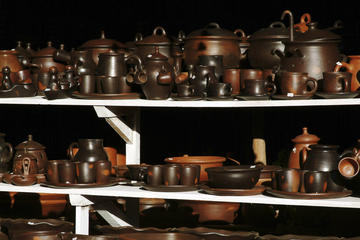
This town is a perfect daytrip that combines traditional food with shopping for the terra cotta dishes used all over Chile for serving soup, olives, and sauces. The greda is from the local hills near Pomaire, and though this is a tourist destination, you're likely to find Chileans stocking up on pailas (greda bowls) for next year's pastel de choclo (a local dish made of ground meat or chicken, studded with olives, raisins and pieces of hard boiled eggs, and topped with a creamy corn mixture before it's baked) …
» Portillo Ski Center
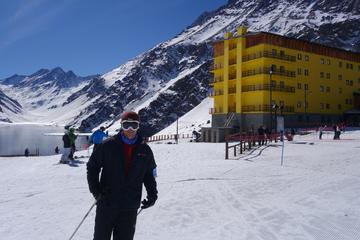
Portillo is one of Chile's most famous ski resorts, and is set into a picturesque piece of the Andes, above a turquoise lake, and under some of the most sought-after peaks in South America. It is about a two-hour drive from Santiago, towards the Argentine border, and though it would be a good day trip, most people who ski here come for a week. The conditions here are generally some of the best in Chile, and the resort has 80% sunny days and an average seasonal snowfall of about 25 feet …
» Red House (Casa Colorada)
_d713-34.jpg)
Though Santiago's historical district boast many architecturally outstanding buildings, most were built or refurbished in the early 1900s, well after the Spanish Colonial period. The Red House - or Casa Colorada - is a fine exception. It's no mystery why this squat stone structure has survived Santiago's tectonic history of earthquakes (and the gas-lamp fires that inevitably followed) intact. Originally completed in 1779 as the home of "Count of the Conquest" Don Mateo de Toro y Zambrano, it has served as a salon for Chile's politicians and VIPs for centuries …
» San Antonio Valley
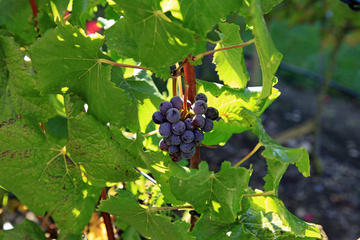
Located a one hour drive from both Santiago and San Antonio, San Antonio Valley is one of the youngest wine growing regions in Chile. It was at the turn of the century when high quality wines started getting produced here with increasing success: elegant Sauvignon Blancs, Chardonnays and the otherwise rare Pinot Noirs. The proximity to the Pacific Ocean and the Humboldt Current are responsible for cool mornings, warm days and a significant temperature drop during the night. Spring frosts happen with regularity as well …
» San Cristobal Hill (Cerro San Cristobal)
The Santiago skyline is dominated by San Cristobal Hill - or Cerro San Cristobal, a forest-carpeted mountain rising from the city, protected as the Parque Metropolitano, or city park. It was once called Tapahue, after the indigenous headdress it resembles, and developed into a public greenspace at the beginning of the 20th century, after the astronomical observatory was constructed atop. Today, the park serves as a scenic escape above the smog that can choke Santiago on winter days, and offers fantastic views across this city …
» Santa Rita Winery
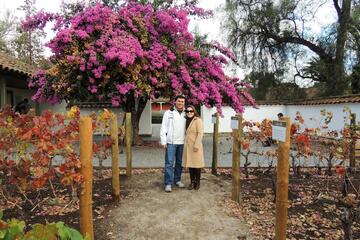
Ancient grapes and full-bodied wines are a huge part of Chile's culture - and no place is this more apparent than on a visit to Santa Rita Winery, located in the scenic foothills of Alto Jahuel. Travelers can wander the grounds through thick groves of old-world vines, sample some of Santa Rita's world class wines or tuck into delicious fare at the Done Paula restaurant or the more casual La Panaderia Café. A tour of the vineyard offers travelers a perfect opportunity to get in touch with the country's deep roots while learning more about the tradition of wine making …
» Termas Valle de Colina
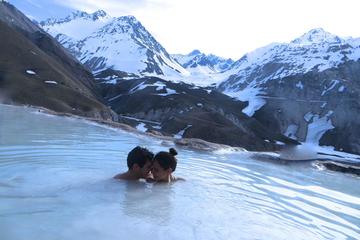
Just outside of Santiago is the weekend getaway spot of Cajón del Maipo, a narrow river valley that snakes its way up to the Andes. The valley has a few small towns in it, with places to eat and stop and shop, but the real prize is way up towards the very top of the (rough) road, shortly before it dips into Argentina, and that is the hotsprings at Termas Valle de Colina. About a 2.5 hour drive from Santiago, at the foot of the San José volcano, at an elevation of about 8,000 feet are the eight different pale blue pools of the hotsprings, which have been channeled away from their source …
» Undurraga Winery
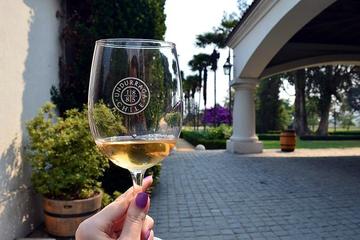
This quiet winery is a short drive from Santiago, on what is referred to as the Autopista del Sol, which heads straight west from Santiago, arriving at the seaside town of Cartagena. Undurraga has a long history in Chile dating back to the 19th century, when this area of the Maipo valley was first used for wine grapes. Basic tours of the winery in English and Spanish start with a description of the operations, and then past some traditional Mapuche (indigenous) carvings, and past a small grotto that visitors can enter to better understand the terroir, between alluvial soils …
» Valparaiso
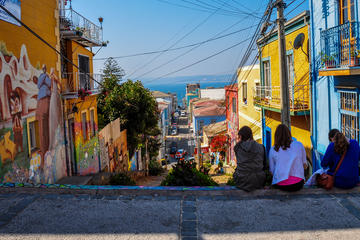
UNESCO declared the historic part of Valparaíso a world heritage site in 2003, and when you get here, you won't wonder why. It's been called the Jewel of the Pacific, or Chile's version of San Francisco, but there's really no comparing it to anyplace you've ever been, and you'll just have to come see it yourself. The city is split into two main parts, the first of these being the 'plan' or flat section, where you'll find the port, the bus station, the market, and pleasant Muelle Barón (a pier) where you can sit and enjoy the view of the water …
» Vina del Mar
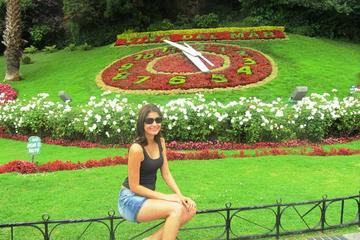
Viña del Mar is Santiago's closeby seaside cousin, just a little bit over an hour away on one of the country's busiest highways. Viña, as it is commonly called calls itself the garden city, for the profusion of flowers, all over the city, and at Quinta Vergara, the large park there, as well as the iconic flower clock that faces the ocean walk so popular among locals and visitors. In the summer, Viña fills up with Chileans as well as Argentines from just across the Andes, and international visitors as well …
» Vitacura
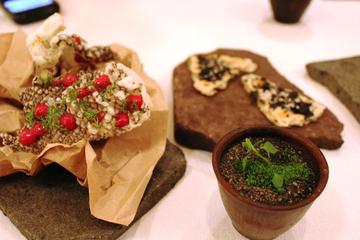
The name of this street, and the neighborhood that surrounds it, is synonymous with fairly close-in luxury in Santiago. It's just to the north of sprawling (but also pricey) Las Condes, and contains some of the highest-valued real estate in the city, including world class hotels, restaurants, shopping, and one of the nicest urban parks you're likely to visit in South America. Shopping takes place on Vitacura itself, and then on two main tree-lined boulevards called Nueva Costanera and Alonso de Córdoba, where there is loads of shopping …
» Yerba Loca Sanctuary
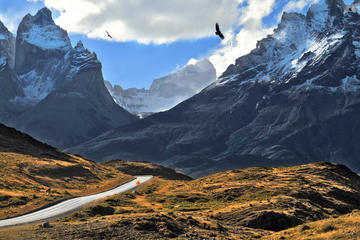
With its glacial ravines, rocky peaks and hillside meadows blanketed with wildflowers, the Yerba Loca Sanctuary presents a startling contrast to bustling Santiago and the natural reserve makes an easy day trip from the capital. Sprawling through the central Andes, the reserve is home to an impressively diverse landscape, with highlights including the looming peaks of Los Piches and El Altar, both reaching over 4,000 meters, the dramatic La Paloma Glacier and the picturesque pine, cypress and eucalyptus forests of the Villa Paulina valley …
« CHILE • Discover Chile • Santiago




